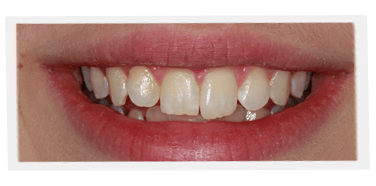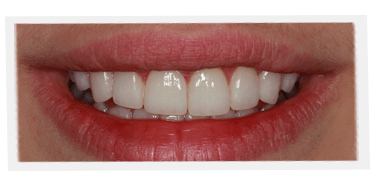
Below are another two common smile problems we see all the time: short teeth and juvenile teeth. Each have their own considerations, and we discuss them here briefly for your reading pleasure. (Taken from my book, A Guide to the Perfect Smile.)
Short Teeth
The amount of tooth showing while talking or smiling is called incisal display. Sometimes a person’s top teeth look too short. Dentists can assess this situation by having the patient hold the sound “E” for an extended time to see how much of the front teeth show. Generally the amount should be 2 to 3mm. If less than that shows, it is either because of unusual wear and tear or because the teeth have not grown in normally.
Solution: The teeth can be lengthened by bonding, veneering, or adding crowns. As was discussed regarding gaps, teeth can effectively by lengthened – by reducing the gum (gingevectomy), especially for patients who have a high lip and show too much of their upper gums when smiling.
Juvenile Smile
Teeth that are short from birth may have the appearance of what dentists call “juvenile smile.”
Solution: Dentists can transform a juvenile smile into a sophisticated, mature smile by performing a laser gingevectomy and by reshaping the gum line and adding porcelains veneers, if necessary.
Skeletal Occlusion
Despite the many different solutions addressed in this chapter to camouflage or otherwise deal with problems by using crowns and veneers, the discrepancy between the teeth and the jaws is sometimes so great, called skeletal occlusion, that there is no other solution but to perform jaw surgery. Either one or both jaws must be moved backward or forward to create a pleasing smile.
Edward S. Philips, D.D.S.



